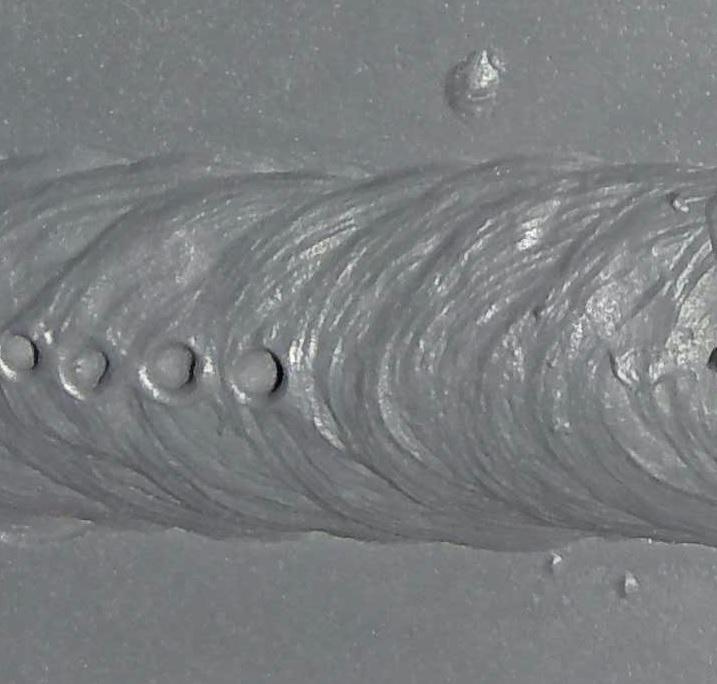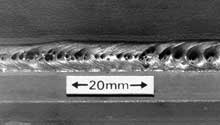Comprehending What is Porosity in Welding: Causes and Solutions
Wiki Article
The Scientific Research Behind Porosity: A Comprehensive Overview for Welders and Fabricators
Understanding the intricate devices behind porosity in welding is crucial for welders and producers making every effort for impressive craftsmanship. As metalworkers look into the depths of this phenomenon, they reveal a world regulated by different aspects that affect the formation of these minuscule gaps within welds. From the structure of the base products to the details of the welding procedure itself, a wide variety of variables conspire to either exacerbate or minimize the existence of porosity. In this extensive guide, we will certainly decipher the science behind porosity, exploring its impacts on weld top quality and introduction progressed strategies for its control. Join us on this journey through the microcosm of welding blemishes, where accuracy meets understanding in the quest of perfect welds.Understanding Porosity in Welding
FIRST SENTENCE:
Examination of porosity in welding exposes crucial understandings right into the integrity and high quality of the weld joint. Porosity, characterized by the visibility of cavities or voids within the weld metal, is an usual issue in welding procedures. These voids, if not effectively addressed, can endanger the architectural integrity and mechanical buildings of the weld, leading to potential failings in the completed product.
To find and measure porosity, non-destructive screening approaches such as ultrasonic screening or X-ray assessment are usually employed. These techniques allow for the recognition of interior defects without jeopardizing the honesty of the weld. By examining the size, shape, and circulation of porosity within a weld, welders can make educated decisions to improve their welding procedures and accomplish sounder weld joints.

Factors Influencing Porosity Development
The incident of porosity in welding is influenced by a myriad of variables, ranging from gas securing efficiency to the ins and outs of welding criterion settings. One critical aspect contributing to porosity formation is poor gas shielding. When the protecting gas, commonly argon or carbon dioxide, is not effectively covering the weld pool, atmospheric gases like oxygen and nitrogen can pollute the liquified metal, bring about porosity. Additionally, the sanitation of the base products plays a significant duty. Contaminants such as rust, oil, or dampness can vaporize during welding, developing gas pockets within the weld. Welding parameters, consisting of voltage, existing, travel speed, and electrode kind, additionally impact porosity development. Making use of improper settings can produce too much spatter or warmth input, which in turn can lead to porosity. The welding strategy used, such as gas steel arc welding (GMAW) or secured steel arc welding (SMAW), can influence porosity development due to variants in warmth circulation and gas coverage. Understanding and controlling check my blog these elements are necessary for lessening porosity in welding procedures.Effects of Porosity on Weld Top Quality
Porosity development dramatically endangers the structural integrity and mechanical residential or commercial properties of welded joints. When porosity exists in a weld, it produces voids or dental caries within the product, decreasing the overall toughness of the joint. These spaces act as stress and anxiety focus points, making the weld extra prone to breaking and failing under tons. The visibility of porosity likewise compromises the weld's resistance to deterioration, as the caught air or gases within the voids can respond with the surrounding environment, bring about degradation with time. Furthermore, porosity can prevent the weld's ability to stand up to stress or effect, further threatening the general top quality and reliability of the welded framework. In critical applications such as aerospace, automobile, or architectural building and constructions, where safety and durability are critical, the destructive impacts of porosity on weld quality can have serious effects, emphasizing the significance of decreasing porosity through appropriate welding strategies and treatments.Methods to Reduce Porosity
Furthermore, using the proper welding parameters, such as the right voltage, current, and take a trip rate, is essential click this link in protecting against porosity. Preserving a regular arc length and angle throughout welding additionally aids decrease the chance of porosity.
Utilizing the proper welding method, such as back-stepping or utilizing a Find Out More weaving motion, can also help disperse warmth equally and minimize the possibilities of porosity formation. By executing these techniques, welders can effectively decrease porosity and generate high-grade bonded joints.

Advanced Solutions for Porosity Control
Applying advanced modern technologies and innovative techniques plays a pivotal duty in accomplishing premium control over porosity in welding processes. Furthermore, using advanced welding methods such as pulsed MIG welding or customized ambience welding can also assist alleviate porosity concerns.Another sophisticated option entails the usage of advanced welding equipment. For example, making use of tools with integrated features like waveform control and advanced power sources can improve weld high quality and minimize porosity threats. Furthermore, the implementation of automated welding systems with accurate control over specifications can substantially lessen porosity flaws.
Additionally, incorporating advanced surveillance and examination innovations such as real-time X-ray imaging or automated ultrasonic testing can aid in spotting porosity early in the welding process, enabling prompt restorative actions. On the whole, incorporating these sophisticated solutions can substantially boost porosity control and improve the overall top quality of welded components.
Verdict
In conclusion, comprehending the scientific research behind porosity in welding is important for welders and makers to produce top notch welds - What is Porosity. Advanced solutions for porosity control can even more boost the welding procedure and ensure a strong and trusted weld.Report this wiki page